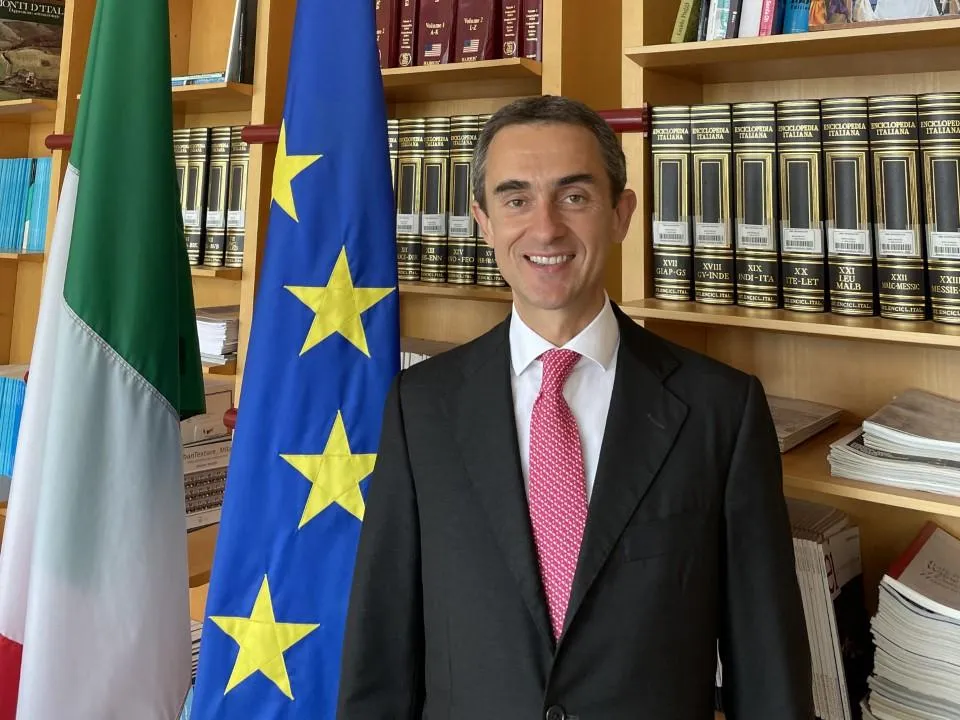
Embassies 2.0: doing diplomacy on social networks
Diplomacy is after change, continuous change in the international arena. It evolves and refines its approach and, in this continuous adaptation, it is also language that changes. With the explosion of social networks, for example, even diplomacy has to deal with a new, different, and much more direct kind of language. This is confirmed by Marco Landolfi, 46 years old and with a degree in Economics from Bocconi, Counselor of the Embassy (First Counselor) at the Washington diplomatic representation, where he works as head of the press and communication.
What is the voice of Italian diplomacy in such an important context as the USA today?
The Farnesina has kept pace with the digital revolution and is investing heavily, at the instigation of Minister Tajani, in communication, including digital media. In the US, the homeland of social media, our Embassy is at the forefront. We have launched a new website, in line with that of the Ministry of Foreign Affairs, and are active on YouTube, Instagram, Facebook and Twitter. We communicate Italy to Americans in all its aspects, amplifying the position of our authorities on current international issues and promoting Italian excellence. We also address our fellow nationals here and the huge community of Americans of Italian descent. Furthermore, we did a series of meetings on Digital Diplomacy, turning the Embassy into a forum for dialogue on technology and innovation issues.
Has your language changed?
We have de-bureaucratized it: 280 characters or a 2-minute video are complex challenges for diplomatic language. We know we need to be clear, authoritative and attractive at the same time. At the instigation of our Ambassador, Mariangela Zappia, we organized a course in social media management which the Farnesina has since been made available to all employees. In collaboration with our Foreign Ministry and US authorities and like-minded countries, we are engaged in the fight against fake news and disinformation, a danger to which we are all exposed.
What is the difference between the American press and the European one?
Historically, major newspapers, even those with a regional circulation, are enormous compared to ours and can afford to have much more specialized journalists by topic or geographical area. The US is also the cradle of media innovation: I am thinking of publications such as Axios and Semafor, which in the wake of Politico have adopted new channels and business models, such as thematic newsletters. Furthermore, US public opinion and the press are more concentrated on domestic issues than their EU counterparts. This is where the challenge of grabbing the attention of the American public becomes challenging.
Let's talk about you. How did you come to fill your current role?
My journey in diplomacy began in 2003: the first Embassy abroad – a rite of passage one never forgets – was at Tehran, from 2007 to 2011. I remember the protests of the green wave after the re-election of Mahmud Ahmadinejad and our concrete support to the injured demonstrators. Or the evacuation that we conducted together with the French colleagues of the staff of the British Embassy, attacked by the Basiji in 2011. After Tehran, I was at the EU in Brussels for 4 years, which covered also the semester of the Italian presidency. Then in 2015 I went back to Rome, to the Office of the Diplomatic Advisor of the Prime Minister and then on secondment to the Cassa Depositi e Prestiti investment bank. In 2020 I landed in Washington, where I had the opportunity to work at the US State Department, a true temple of international diplomacy, and then at the Italian Embassy, one of the largest and most prestigious in our network!